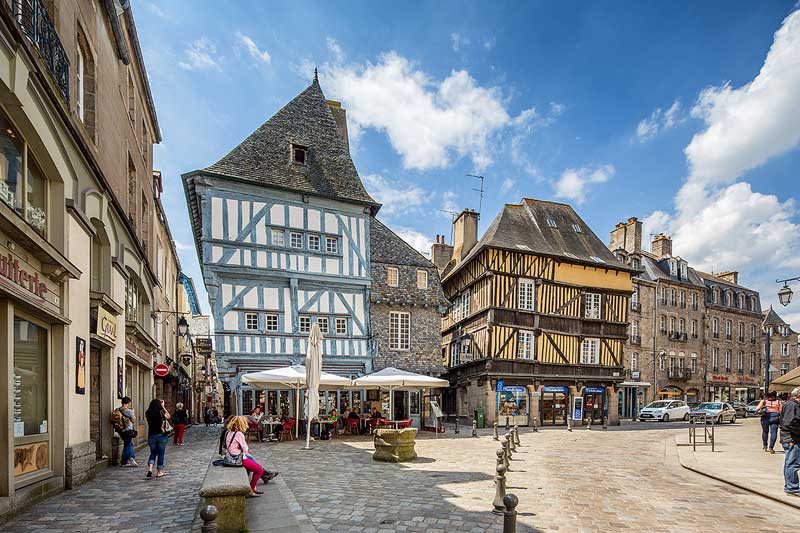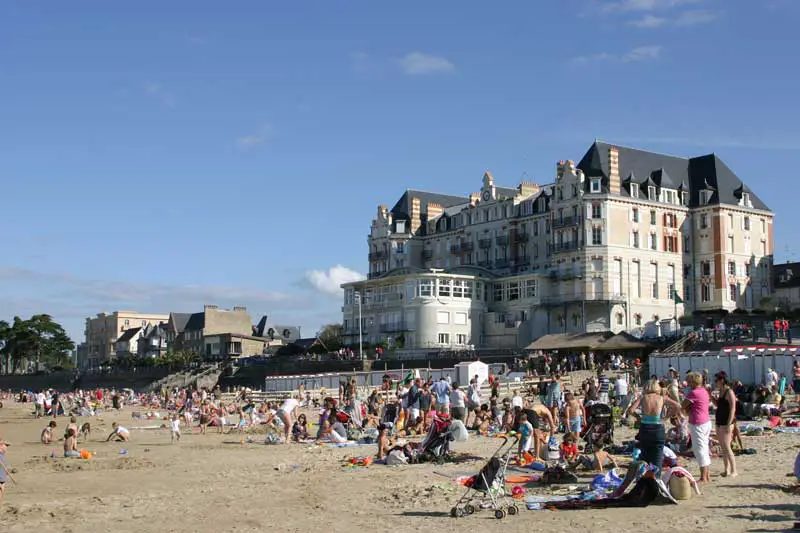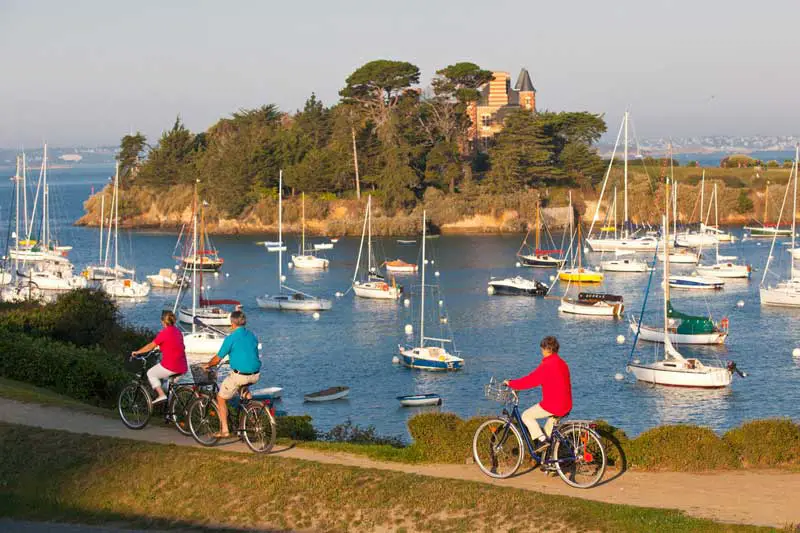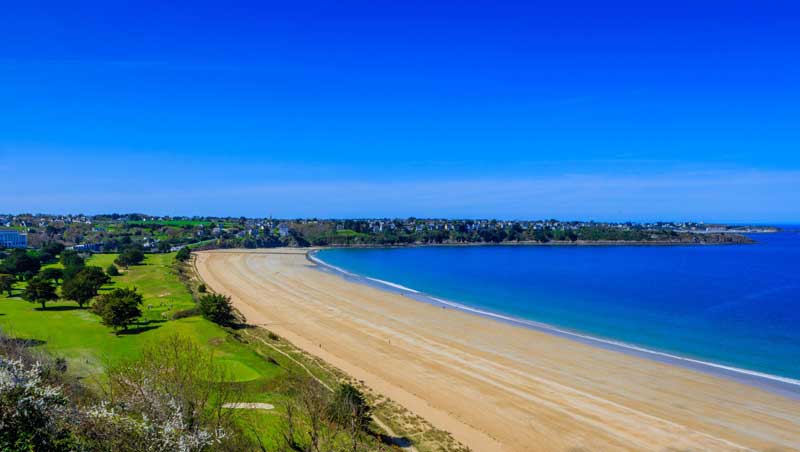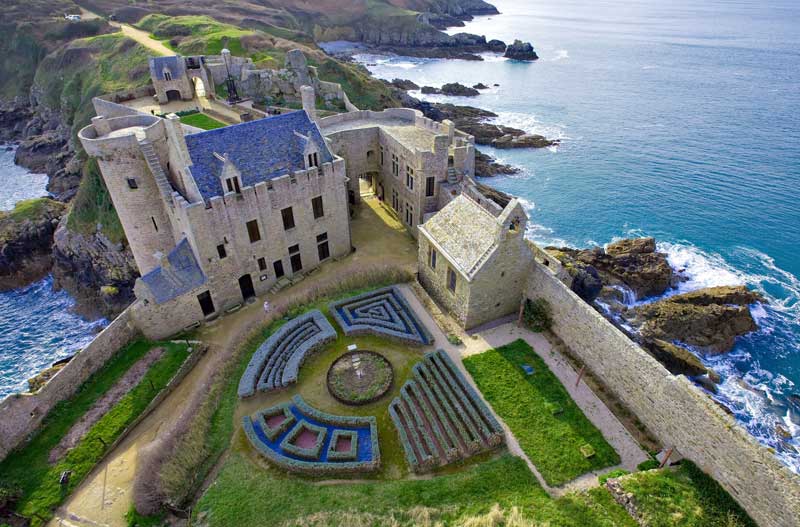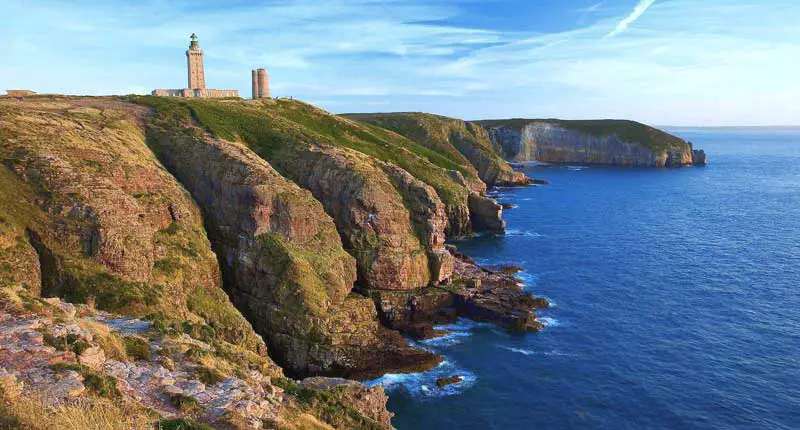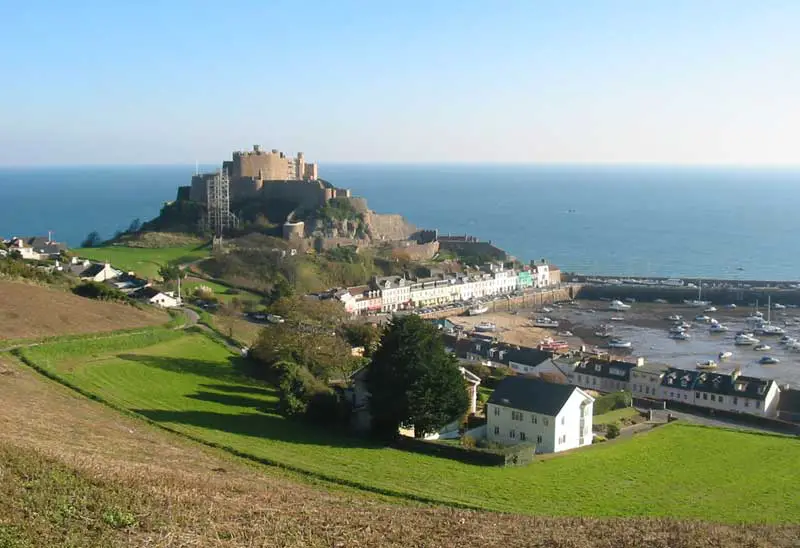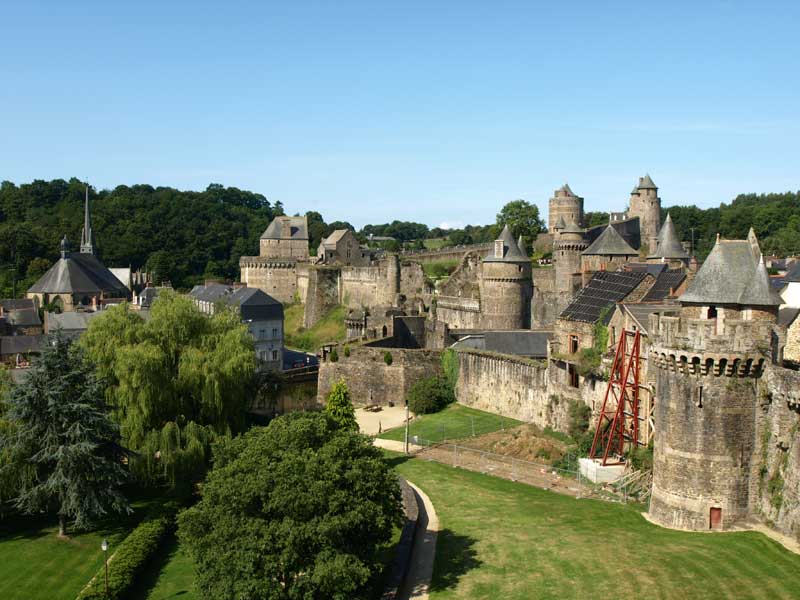St Malo, France
Saint-Malo is a coastal city in Brittany, in France’s northwest.
Tall granite walls surround the old town, which was once a stronghold
for privateers (pirates approved by the king). Having withstood
maritime invasion from countless forces, this resilient harbour city
holds a picturesque beauty that many argue makes it France’s most
beautiful Channel Port. St Malo’s cobbled streets are lined with
historical homes, busy boutique shops, alluring cafes and restaurants,
and a wide array of hotels and bars. Whats more, St Malo is the perfect
gateway to Western France.
St Malo is best known as being a breeding ground for privateers, who
based themselves in the St Servan district (although to see how they
lived you should head back intra muros to Hotel d’Asfeld). It was here
that St Malo was founded by the Welsh monk St Maclou, who built a
church on the site of the Roman city of Alet . The main reason to come
this area, apart from the views back over the citadel, is to see the
14th-century Tour Solidor, which houses the Museum of Cape Horners.
Long sandy beaches sweep east from the old town to the district of
Rotheneuf. Here you’ll find the former house of one of St Malo’s most
famous sons, Jacques Cartier, who discovered Canada; the 15th-century
Manoir de Limoelou houses a fascinating museum dedicated to the
explorer. The first settlers to colonise the Falkland Islands were from
St Malo.
Ferries From The UK
High speed ferries operate from from Jersey to St Malo, completing
the journey in just an hour. Passengers can travel on foot or bring a
car.
The Portsmouth to St Malo car ferry is a popular choice for a relaxing
cruise sailing direct into Brittany from the south of England. Brittany
Ferries offer overnight sailings on most days aboard our cruise ferries
Bretagne and Pont-Aven. Sailings depart from Portsmouth in the evening,
return sailings from St Malo leave France mid-morning for a comfortable
cruise experience back to the UK. Portsmouth ferry port is within 2
hours drive of London and there is direct access to the city from the
M27 motorway.
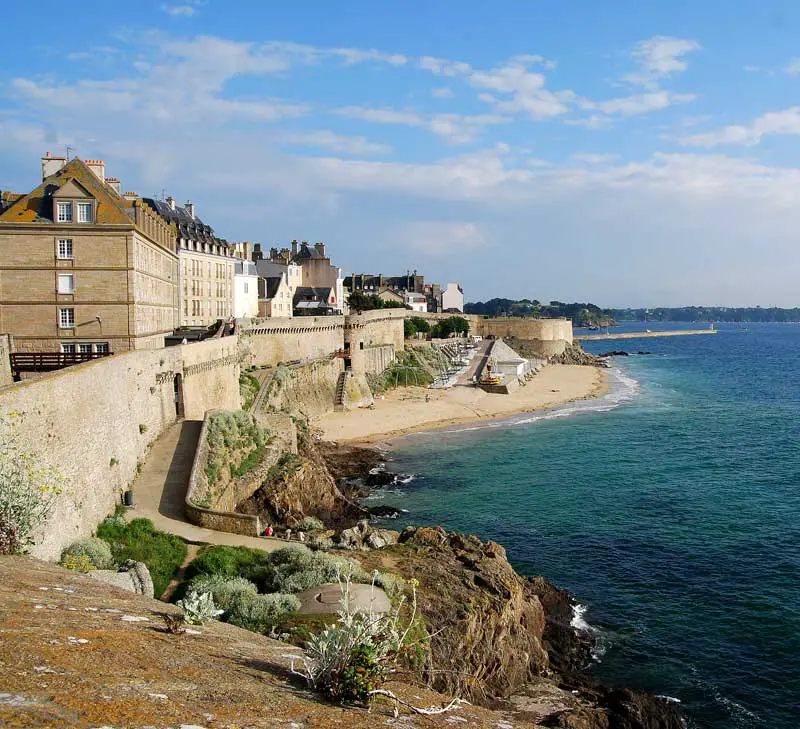
Plan and Book:



St Malo, France: See and Do
St Malo has several districts, the most popular being intra muros or
‘inside the walls’. The tall granite buildings, most of which were
restored after being bombed during the war, house an interesting mix of
cosy hotels, restaurants to suit all tastes and shops by the dozen.
Take a tour on the little train to get your bearings or enjoy a bracing
walk around the ramparts. The Musee de la Ville tells you all you need
to know about the town’s history and includes some fascinating
maritime objects like the prow of a ship.
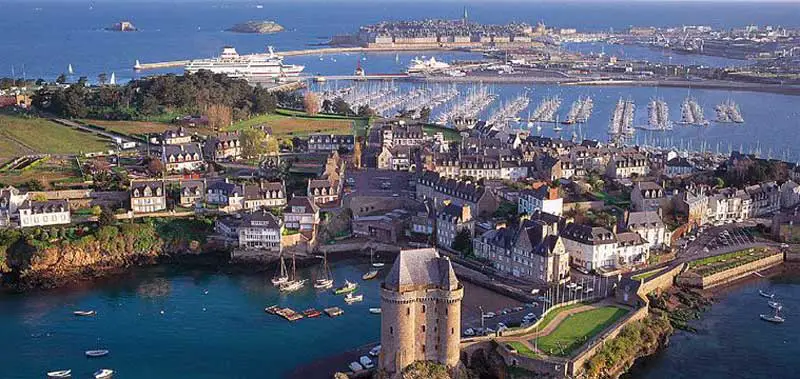
The Grand Aquarium, a few miles south of the citadel, displays fish and
sea life from around the world in 8 different aquariums. The aquariums
include a circular fish tank, allowing visitors to stand in the middle
of swirling fish shoals and an open air touching pool.
Cobac Parc, is a 12 hectare wooded park with a huge range of activities
for the whole family, including a water park, mini golf and a
merry-go-round.
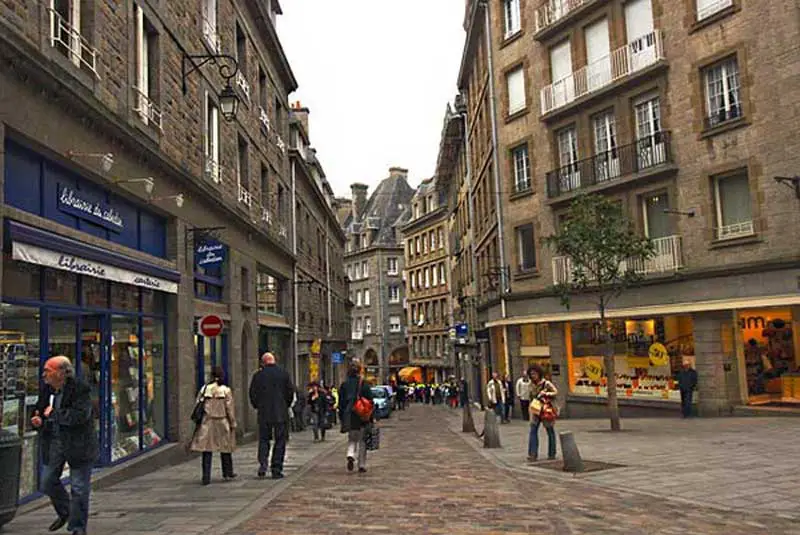
The ancient cobbled streets are full of fascinating shops selling
crafts, and open markets for local produce. In St Malo you will find a
range of art, music and book shops. The city also offers a choice of
hypermarkets and specialist shopping. Enjoy a range great food to suit
all tastes and budgets, from quaint bistros to a Michelin star
experience. Local specialties include fresh lobsters and Cancale
oysters, as well as other classic French fare, such as crepes and
moules. Some of the most popular restaurants and cafés are
situated in a long line inside the city ramparts between Porte
St-Vincent and the Grande Porte.
To the right of the city’s main gate, sits The Chateau De St Malo,
housing the Musee de la Ville. The Museum exhibits St Malo’s
historic past incorporating piracy, colonialism, slave trading and
German Occupation during World War II.
Go back to the 9th century by visiting the Cathedral of St. Vincent,
which includes Angevin, Plantagenet, Romanseque and Gothic
architecture. Walking along the 12th century ramparts, stretching 2 km,
you can admire fantastic views of the old town’s houses, the bay
and the islets at the mouth of the Rance estuary.
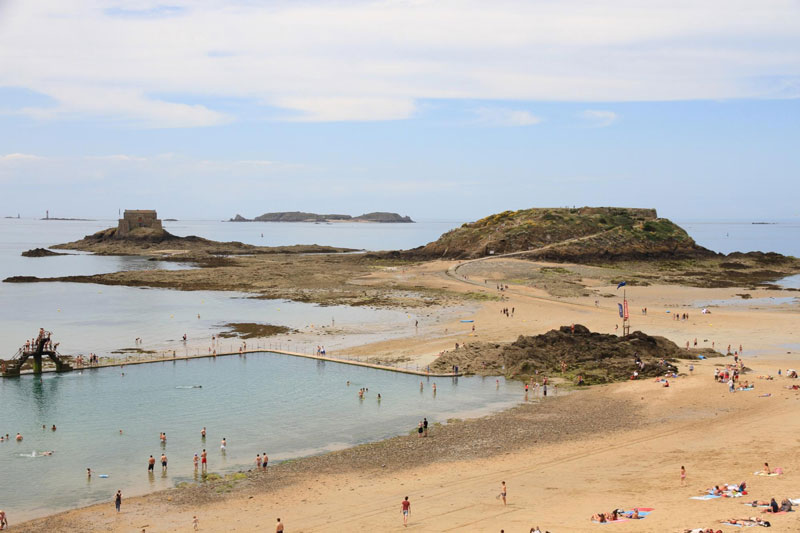
Opposite the old town are two little islands that can be reached at low
tide (heed the warnings or you’ll get stuck!). A walk along the causeway at low tide, and then onward towards them, is an essential part of a visit here. On one is the
Vauban-built Fort National and on the other is the tomb of the writer
and politician Chateaubriand, who was born in St Malo in 1768. The latter – Grand Bé – gives the opportunity to see the city walls and out to sea from a different angle. The path to and from the island is only accessible at low tide, so plan accordingly where possible to ensure that you can get both on and off the island.
Surrounding Area
There are some absolute delights awaiting those willing to venture a
relatively short distance from the town. Mont St-Michel is located 50
km to the east, just inside neighbouring Normandy, while 20 km to the
south the stunning medieval city of Dinan rises up alongside the River
Rance. The surrounding Emerald Coast offers some of the most
traditional seaside resorts, with pleasant sandy beaches, in this part
of France.
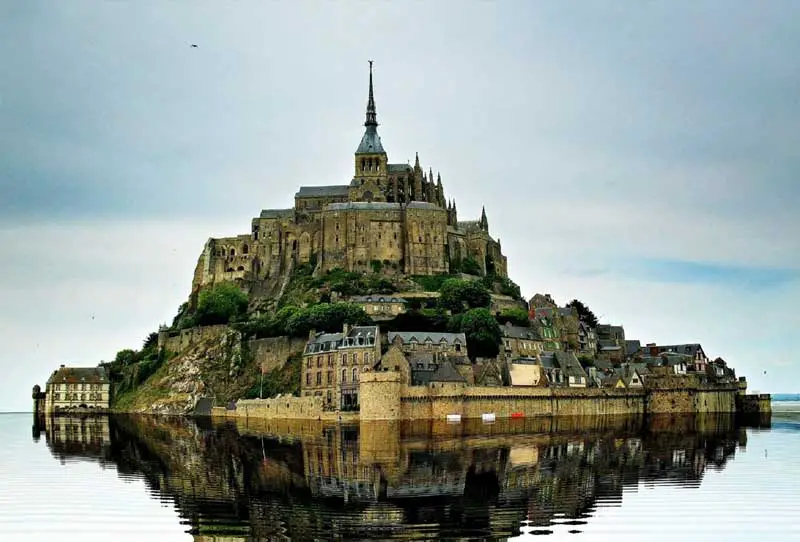
Mont St-Michel
Mont St-Michel dominates the flat bay of the same name and stands
just over the border in Normandy. The entire bay area is classified as
a UNESCO world heritage site and this tidal island makes for a
breathtaking place to visit. An abbey has existed on the 80 m high
outcrop since the 8th century and from this imposing position acts as a
potent symbol of the Church. Today, Mont St-Michel is one of the most
recognisable landmarks in France.
Getting There: A regular bus service covers the 50 km journey from the
SNCF station in St-Malo terminating at the lowest gate on Mont
St-Michel. This is also the location of the tourist office. Those
wishing to go by rail should alight at Pontorson, 6 km from the Mont,
and take the connecting bus to the same point. Travelling by car is
straightforward with parking on the causeway or sands at 4 EUR. To
avoid congestion, park on the mainland and enjoy the 2 km crossing on
foot.
Design by W3layouts

